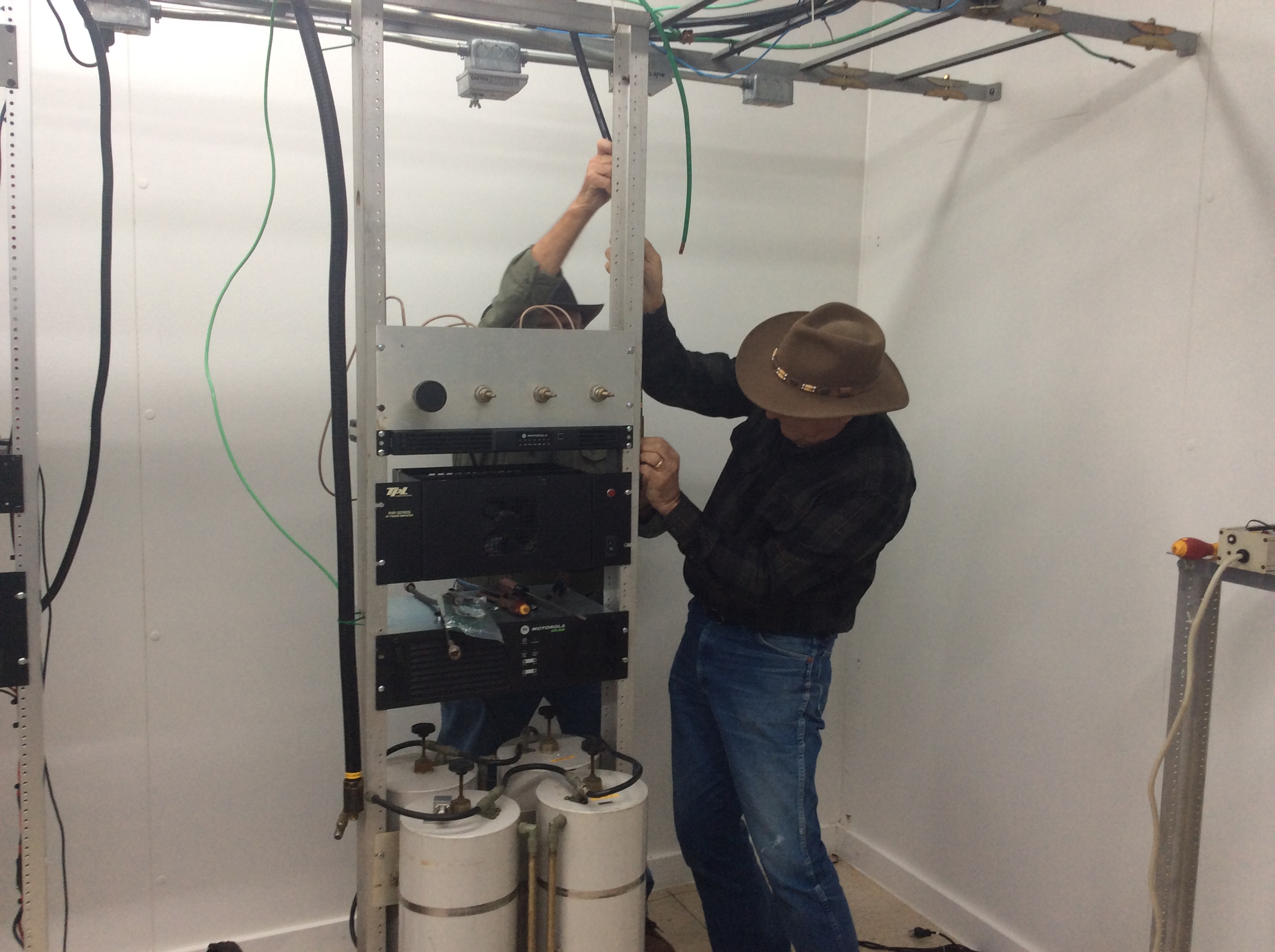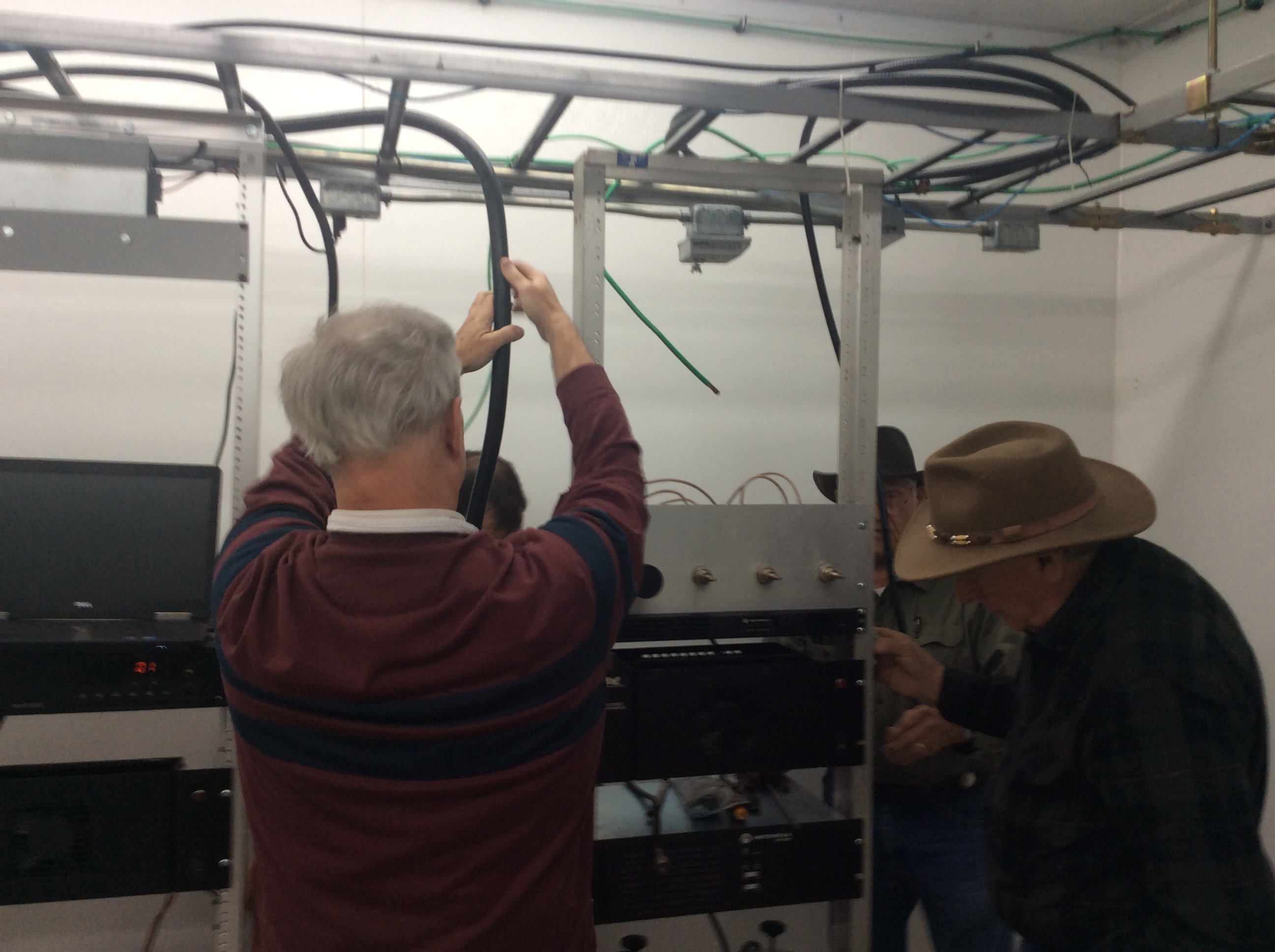Amateur radio, also known as ham radio, describes the use of radio frequency spectrum for purposes of non-commercial exchange of messages, wireless experimentation, self-training, and emergency communication. The term “amateur” is used to specify “a duly licensed person interested in radio-electric practice with a purely personal aim and without monetary interest.
The amateur radio service (amateur service and amateur-satellite service) is established by the International Telecommunication Union (ITU) through Radio Regulations. In the US, radio spectrum regulations are regulated by the Federal Communications Commission (FCC).
Radio amateurs use a variety of transmission modes such as voice, text, image, and data communications and have access to frequency allocations throughout the RF spectrum. This enables communication across a city, region, country, continent, the world, or even into space.
Multiple transceivers are employed for different bands and modes and distances to be covered. Computers are used for control, data modes, Software Defined Radio (SDR) and logging of contacts.
The origins of amateur radio can be traced to the late 19th century, but amateur radio as practiced today began in the early 20th century. The Wireless Association of America produced in 1909 a list of amateur radio stations. This first radio callbook listed amateur wireless telegraph stations in Canada and the United States and included 89 amateur radio stations.
The term “ham” was first a term used in professional wired telegraphy during the 19th century, to mock amateur operators with poor Morse code sending skills. Amateurs were considered “ham-fisted”. This term continued to be used after the proliferation of other modes. Over the years, the amateur radio community subsequently began to reclaim the word “ham” as a label of pride.
The many facets of amateur radio attract practitioners with a wide range of interests. Many amateurs begin with a fascination of radio communication and then combine other personal interests to make pursuit of the hobby rewarding. Some of the focal areas amateurs pursue include building their own equipment, radio contesting, radio propagation study, public service communication, technical experimentation, radio astronomy and computer networking. Overall it is a do-it-yourself society.
Amateur radio operators use various modes of transmission to communicate. The two most common modes for voice transmissions are frequency modulation (FM) and single sideband modulation (SSB). FM offers high quality audio signals and is usually used for local communications. SSB is better at long distance communication when bandwidth is narrower. Hams predominantly achieve long range world-wide communications by bouncing their signals of a layer of atmosphere called the ionosphere.
Although computer-based (digital) modes and methods have largely replaced CW for commercial and military applications, many amateur radio operators still enjoy using the CW mode. Demonstrating a proficiency in Morse code was for many years a requirement to obtain an amateur license. Following changes in international regulations in 2003, Morse code is no longer a requirement to getting a license.
Modern personal computers have encouraged the use of digital modes such as radio teletype (RTTY), PSK31, WSJT, etc. Echo-Link using computer Voice over IP technology has enabled amateurs to communicate through local Internet-connected repeaters and radio nodes, while IRLP has allowed the linking of repeaters to provide greater coverage area. Modes, such as WSJT, are used for weak signal communication including meteor scatter and moon-bounce communications.
Linked repeater systems, can allow transmissions of VHF and higher frequencies across hundreds of miles. Repeaters are usually located on heights of land or tall structures and allow operators to communicate over hundreds of miles using hand-held or mobile transceivers. Repeaters can also be linked together to increase the coverage area.
NASA has installed a ham radio in the International Space Station. The International Space Station uses the call sign NA1SS and is very active in school related contacts to further STEM education. Most of the astronauts and cosmonauts are licensed as amateur radio operators.
Some Amateur radio satellites can be accessed using a hand held walkie-talkies. Other satellites require more power to access the spacecraft but can be accessed with modest home stations. Hams also use the moon, the aurora borealis, and the ionized trails of meteors as reflectors of radio waves to make contacts.
Amateur radio operators use their amateur radio station to make contacts with individual hams as well as round table discussion groups called “nets” (as in “networks”) which are moderated by a station referred to as “Net Control”. Nets can allow operators to learn procedures for emergencies, be an informal round table, or cover specific interests shared by a group.
Amateur radio operators, using battery or generator powered equipment, often provide essential communications services when regular channels are unavailable due to natural disaster or other disruptive events such as hurricanes, earth quakes and wildfires.
Amateur radio licensing in the United States exemplifies the way in which some countries award different levels of amateur radio licenses based on technical knowledge: three sequential levels of licensing exams (Technician Class, General Class, and Amateur Extra Class) are currently offered, which allow operators who pass them access to larger portions of the Amateur Radio spectrum. An exam, authorized by the Federal Communications Commission (FCC), is required for all levels of the Amateur Radio license in the US. These exams are administered by Volunteer Examiners, accredited by the FCC
Many people start their involvement in amateur radio by finding a local club. Clubs often provide information about licensing, local operating practices, and technical advice. Newcomers also often study independently by purchasing books or other materials, sometimes with the help of a mentor, teacher, or friend
Many jurisdictions (including the US) may issue specialty vehicle registration plates to licensed amateur radio operators often in order to facilitate their movement during an emergency.
Unlike other RF spectrum users, radio amateurs may build or modify transmitting equipment for their own use within the amateur spectrum without the need to obtain government certification of the equipment. Licensed amateurs can also use any frequency in their bands (rather than being allocated fixed frequencies or channels) and can operate medium to high-powered equipment on a wide range of frequencies so long as they meet certain technical parameters including occupied bandwidth, power, and prevention of spurious emission.
Amateur radio operators are encouraged both by regulations and tradition of respectful use of the spectrum to use as little power as possible to accomplish the communication. This is to minimize interference to other operators. Although allowable power levels are moderate by commercial standards, they are sufficient to enable global communication on a daily basis. Lower license classes usually have lower power limits.
Power limits vary from country to country and between license classes within a country. For example, the peak envelope power limits for the highest available license class is 1.5 kW in the United States. Output power limits may also depend on the mode of transmission.
In the United States, amateurs may apply to be registered with the Military Auxiliary Radio System (MARS). Once approved and trained, these amateurs also operate on US government military frequencies to provide contingency communications and morale message traffic support to the military services.
When cell phones, home phones, the internet and other systems are down or overloaded due to disasters, Amateur Radio still gets the message through. Radio amateurs enjoy radio technology as a hobby, but it’s also a national service. An emergency service that has saved many lives when regular systems based communication systems and technology have failed.
Hams are at the cutting edge of many technologies. They provide thousands of hours of volunteer community and emergency services when normal communications go down or are overloaded. All of them enjoy being creators of technology and not just consumers of technology.
Learn More about Ham Radio at this link: http://www.arrl.org/
You Tube Video Links to Learn More:



